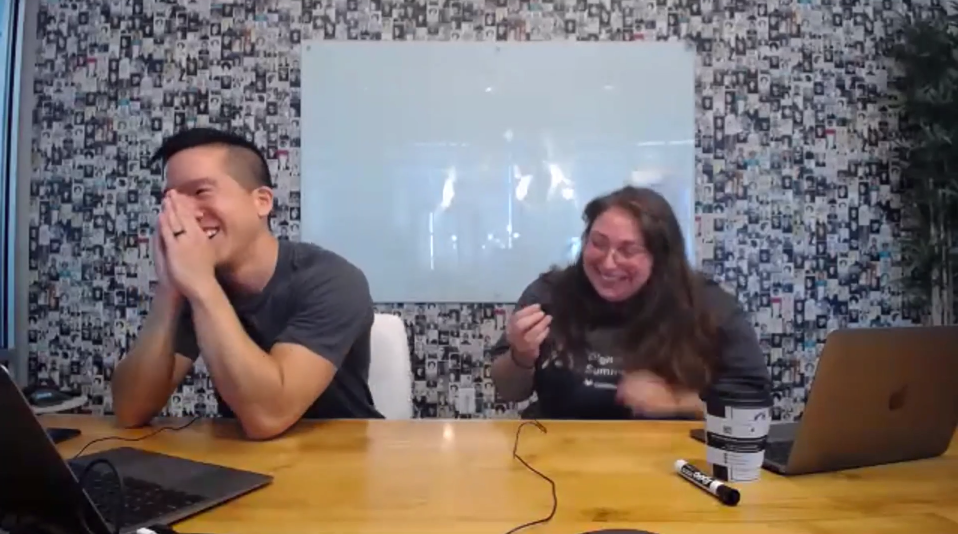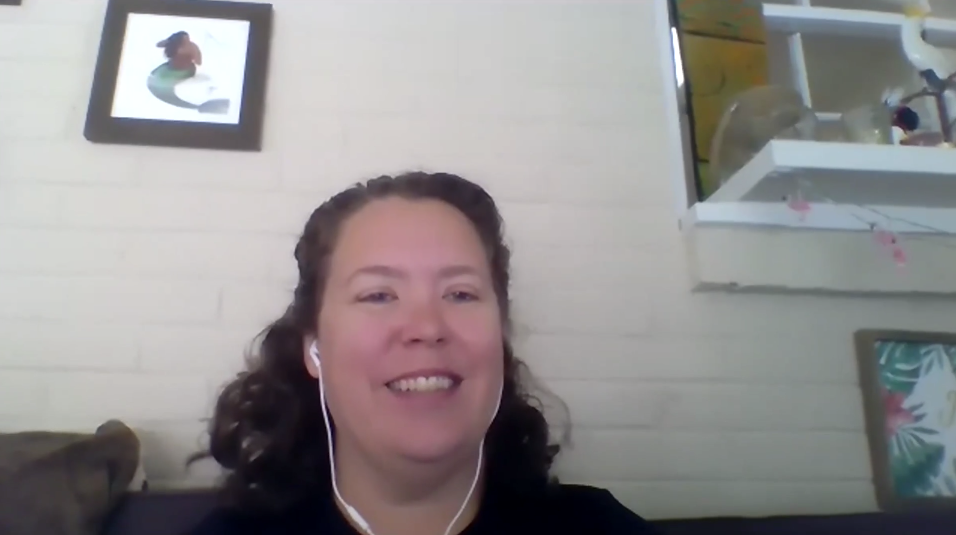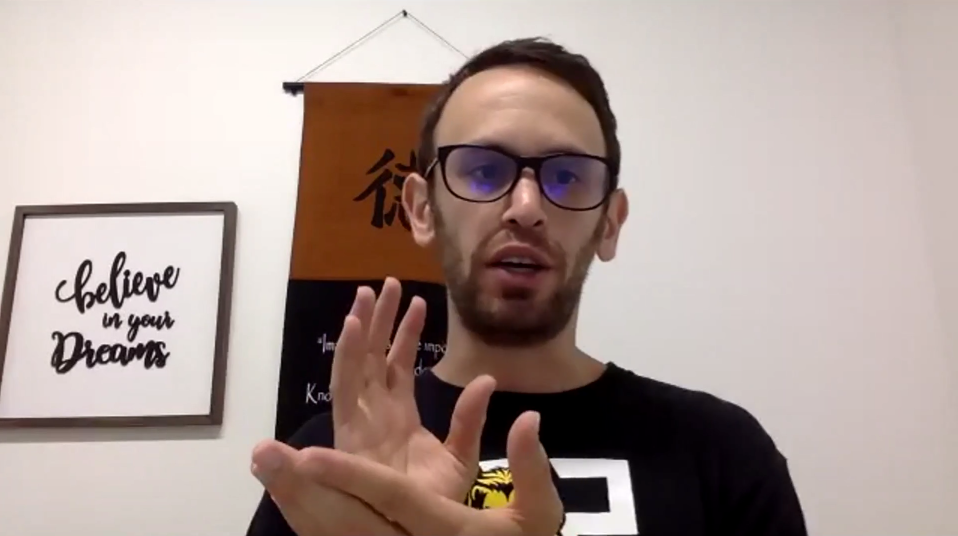Today’s digital fundraising landscape is noisy and ever-changing, making it hard for nonprofit leaders like yourself to know how to actually generate results.
The way donors give has shifted, social media has become spend-based, and the skill sets of successful fundraisers have changed.
If you’re struggling to raise funds, insights from the Digital Fundraising Summit will help you acquire new skills, new processes and new technology to help you raise more with less effort.
The Summit included 13+ sessions and shared over eight hours of expert content in social media, converting people into donors, digital storytelling, learning how to target audiences and more. This is Part 1 sharing the 22 top insights learned from the Digital Fundraising Summit.
Digital Fundraising Summit Kickoff & Keynote – CauseVox

First up on our list of important insights learned during the Digital Fundraising Summit is the kickoff and keynote by Rob Wu and Candace Cody from CauseVox. They gave a brief overview of the CauseVox mission and how the platform makes fundraising so much easier for nonprofit leaders.
This session went over ways you can elevate your digital fundraising for this year-end and beyond by:
1) You can create donation pages, peer-to-peer fundraising, and crowdfunding that convert more donors with CauseVox
2) When you tidy up your digital fundraising using a platform that isn’t clunky, complex or bound by contracts, your donors will have a good experience, and it’ll be easier for your to manage your fundraising.
3) CauseVox helps you raise more money with less clutter, frustration and wasted effort so you have more time to invest in donors.
Social Media Savvy: Amplify Your Audience – Dawn Crawford, BCDC Ideas

This extremely useful and valuable session by Dawn Crawford (BCDC Ideas) on social media is sure to gain more visibility for your organization while also stressing a very important idea: it’s a great way to prime people to learn about your organization, but likely isn’t the tool they use to donate.
In order to use social media effectively, you need to think about it being at the top of your funnel and a tool for engagement and awareness.
You’re catching as many people as you can and creating affinity and love for your brand. Aside from many tactical points on how to use the four main social platforms for your brand (Facebook, Twitter, Pinterest and Instagram), you’ll also learn more about these strategy tips:
4) To determine the best tools for fundraising, test posts on any of the platforms (Facebook, Twitter, Pinterest or Instagram) and then use the built-in analytics to find where your audience is most reached and engaged. From there you can use a social management tool like Hootsuite or Buffer to access advanced analytics and see which posts and platforms are performing the best for your organization.
5) You can create a “surround sound” approach by spreading the same core messages across many kinds of content through many different channels like Facebook, Twitter, Pinterest, Instagram, YouTube and more.
6) To make the most of your content marketing, use one piece of content to do many things, like a campaign video that can be shared to YouTube, added as a link on Twitter or used as a story for Facebook or Instagram.
7) Write a strategic and strong call to action (CTA) that content drives back to a donation page on your website, which helps drive traffic to that page and creates more awareness around your campaign.
Clicks to Conversions – Andrew Gottlieb, No Typical Moments

This session by Andrew Gottlieb with No Typical Moments touches on how nonprofit and purpose-driven organizations can leverage media to go from clicks to actual conversions and donors.
Andrew leads viewers through four phases of how to get traffic, how to turn traffic into leads, how to design a sales system that turns leads into customers and the key metrics you need to make data-driven decisions.
If you’ve ever wondered whether Facebook ads could work for your business, Andrew will show you how they can, and why they’re so powerful. You’ll learn how to:
8) Leverage the immense wealth of data Facebook has to gain even more insight into who your ideal audience is, including what their interests are, their occupations, income levels, other organizations they follow, etc.
9) Create custom audiences that you can target through advertising to reach the exact type of people more willing to become fans of your organization’s mission and become active donors.
10) Track a user who clicked on one of your ads but didn’t convert and then use pixels to create similar ads that will appear on other pages the user is viewing. This gives you the opportunity to retarget those same people with different ads all with the goal of converting them into active contributors.
11) Control and own your market’s traffic by creating ads that have a clear and specific offering, excellent copy and graphics, and that hit on the solution your organization provides.
Targeting Custom Audiences
If you want to create custom audiences to target, Andrew touches on the way to use warm audiences and lookalike audiences to target the exact type of people who may be interested in your organization’s mission. He also discusses the differences between warm, lookalike and cold audience segments.
You’ll also learn how to make Andrew’s ideas work for your organization, even if you’re a small nonprofit and you have a limited budget, like $100, to use on advertising. He suggests you:
12) Use split testing to determine the most effective copy and headlines. By testing variations of the same ad tweaking the headline or the copy you’re using, you can easily and effectively see what’s working and what’s not working and quickly make adjustments based on those results.
13) Turn basic traffic into actual donations by using a clear and specific offering and telling people what you’d like them to do through your advertising.
14) Use pixels and retargeting to drill down into the right people to target so you can reach the people more likely to be effective donors or champions of your organization’s mission.
15) Warns against the misconception that you need to spend a lot on advertising in order to see a good ROI. Andrew has worked with small nonprofits before with only a $100 budget for ads and through testing with a targeted email list and ads that ran to just those individuals they were able to get more signups for an event.
16) Refer to the Facebook Ads Library to see what other organizations are doing for their FB ads and can provide inspiration for your nonprofit’s ads.
Digital Storytelling for Social Impact – Jeremy Bivins, Good Dog Strategies

Part of being an effective nonprofit leader is getting people to take action through digital storytelling. More importantly, the stories nonprofits are telling must result in social impact.
17) Jeremy Bivins with Good Dog Strategies reminds us why stories matter. And how the shape and delivery plays a part in strategic storytelling. In this session, he dissects the social impact story map and how that can be effective for your organization. He also touches on these main points:
Your organization can create an overall strategy for digital storytelling that answers who you’re talking to, the overall message and what success looks like for your organization.
18) Create different types of content you can tell stories with, including photos, videos, data and statistics, short-form stories and quotes or long-form narratives and reports.
19) If you’re struggling to connect with your audience you can use the narrative framework and the 40/60 rule for effective storytelling, which says you should create content 40% of the time and then spend the remaining 60% marketing that content.
20) Use existing internal platforms that you can distribute stories on, including your website and blog, social media channels your organization is using, email campaigns, brochures and other marketing collateral.
21) Evaluate whether your storytelling is working by looking at your website traffic and shares, checking social media posts to see if people are engaging with your message, and cross-referencing email and direct mail to see if you’re increasing sign-ups.
22) Ask your team members for content when they go out into the field to build up your content for storytelling. Consider creating a story bank and training your team to spot ideas and stay up-to-date on new tools and learning how to reuse evergreen content in new ways.
Learn Even More Insights With Notes and Recordings From The Digital Fundraising Summit
If you’d like to go even deeper into the content and sessions from the Digital Fundraising Summit, you can purchase the notes and recordings for $25.
You’ll get over eight hours of exclusive, expert content from 13+ sessions through video recordings and written notes (33 pages) that you can download and immediately apply to your own organization. To purchase the notes and recordings go here.




